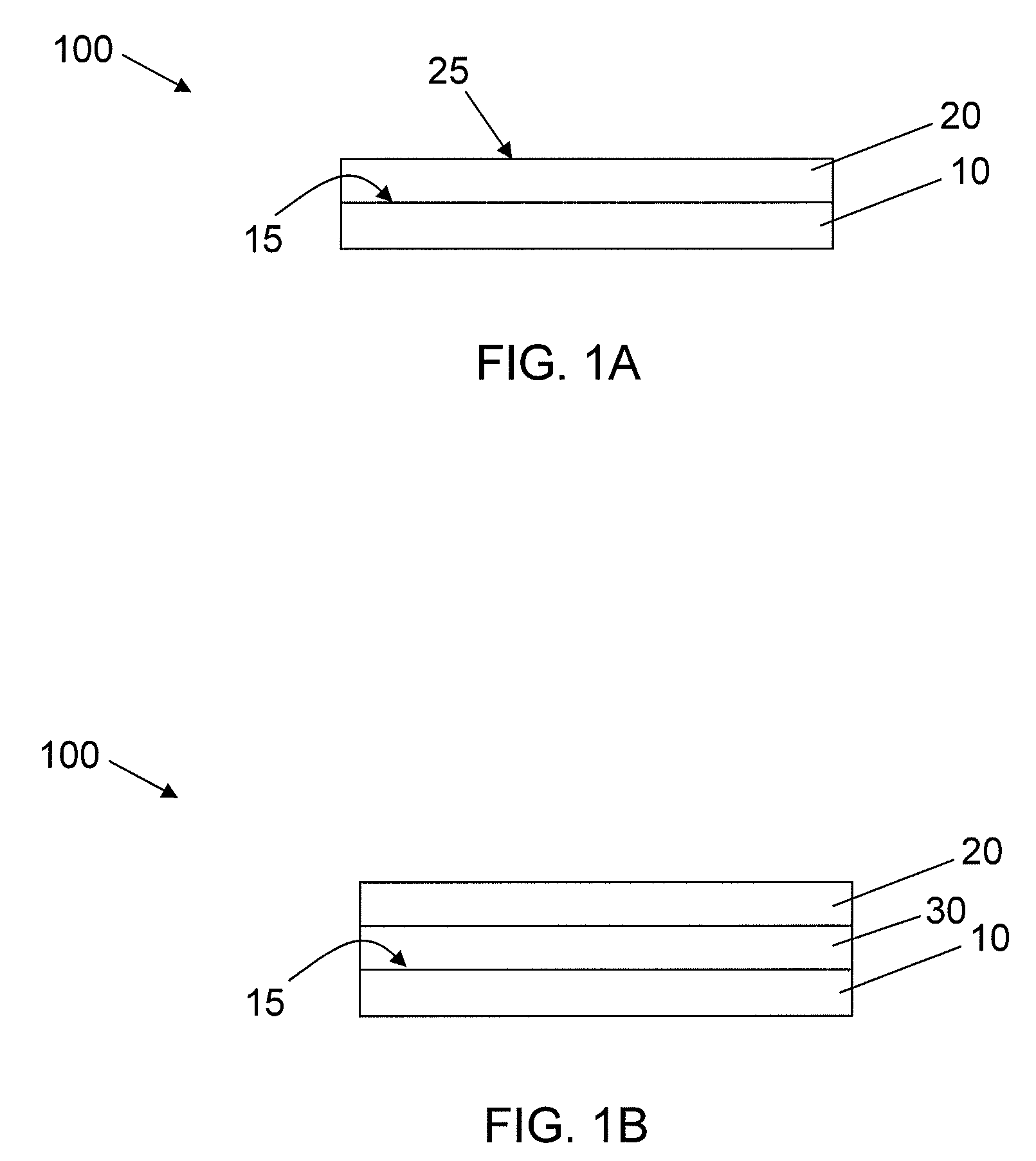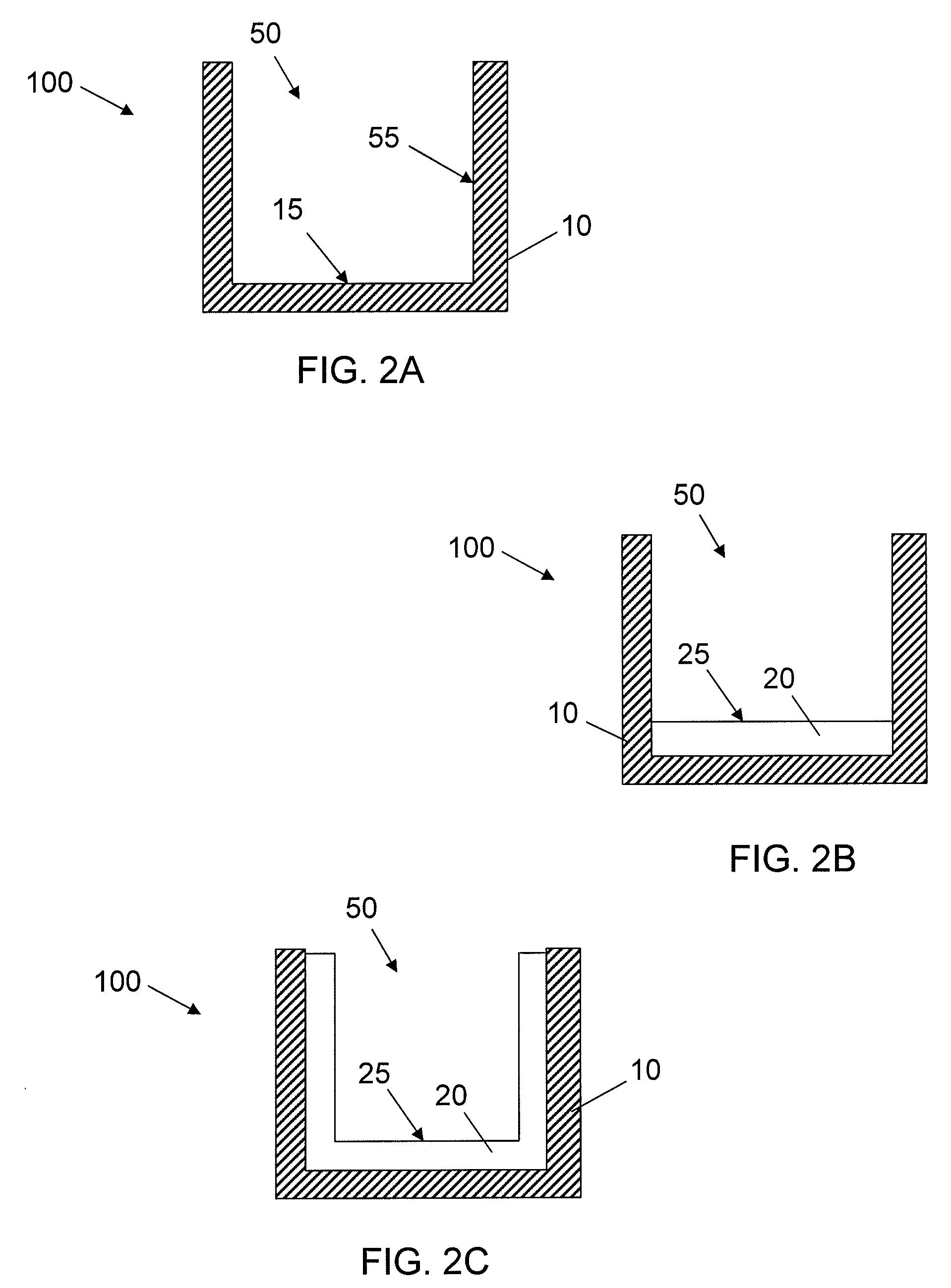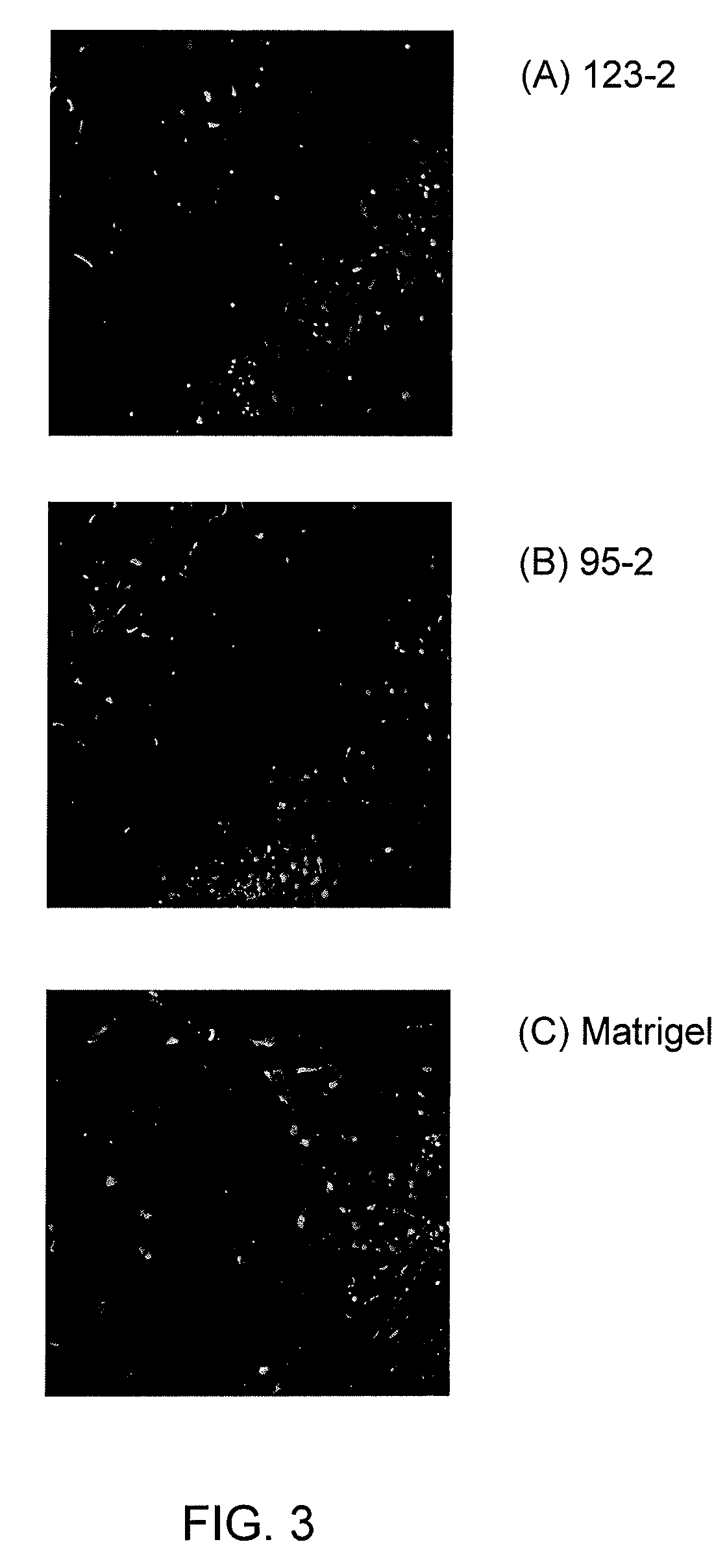Synthetic surfaces for culturing stem cell derived oligodendrocyte progenitor cells
a technology of stem cell derived oligodendrocytes and synthetic surfaces, which is applied in the field of cell culture articles, can solve the problems of affecting the development of hesc-based treatments, affecting the survival of patients, and generally irreversible damage to the spinal cord, so as to reduce potential contamination problems, improve shelf life, and reduce potential contamination problems
- Summary
- Abstract
- Description
- Claims
- Application Information
AI Technical Summary
Benefits of technology
Problems solved by technology
Method used
Image
Examples
example 1
Identification of Acrylic Coating Surfaces Suitable for Culturing Stem Cell Derived OPCs in a Chemically Defined Medium
1. Coating Preparation
[0062]Acrylic coating surfaces were prepared from homomonomers or copolymers of various acrylate monomers. For copolymers two different acrylate monomers were used. A total of 24 homopolymer and 552 copolymer combinations were applied in wells. Briefly, the monomers were diluted in ethanol, and IRGACURE 819 photoinitiator to the ratio of 1:9:0.01 (monomer[volume] / ethanol[volume] / photoinitiator[weight]) to prepare the formulation. For copolymers, two different monomers were mixed with the volume ratio of 70:30 or 30:70. In copolymer formulation, total monomers[volume] / ethanol[volume] / photoinitiator[weight] still remain the ratio of 1:9:0.01. The formulations were placed in a well of a plasma treated cyclic olefin copolymer 96 well plates (provided by Corning Life Science development group) at a volume of 5 μL using BioTek Precession Microplate P...
PUM
| Property | Measurement | Unit |
|---|---|---|
| thickness | aaaaa | aaaaa |
| thickness | aaaaa | aaaaa |
| thickness | aaaaa | aaaaa |
Abstract
Description
Claims
Application Information
 Login to View More
Login to View More - R&D
- Intellectual Property
- Life Sciences
- Materials
- Tech Scout
- Unparalleled Data Quality
- Higher Quality Content
- 60% Fewer Hallucinations
Browse by: Latest US Patents, China's latest patents, Technical Efficacy Thesaurus, Application Domain, Technology Topic, Popular Technical Reports.
© 2025 PatSnap. All rights reserved.Legal|Privacy policy|Modern Slavery Act Transparency Statement|Sitemap|About US| Contact US: help@patsnap.com



